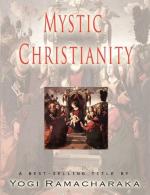Of course, the true history of the real connection between the Essenes and Christianity is to be found only in the traditions of the Essenes and other ancient Mystic Orders, much of which has never been printed, but which has passed down from teacher to pupil over the centuries even unto this day, among Occult Fraternities. But in order to show the student that we are not making statements incapable of proof by evidence available to him, we would refer him to any standard work of reference on the subject. For instance, if he will consult the “New International Encyclopedia” (Vol. VII, page 217) article on “Essenes,” he will read the following words:
“It is an interesting question as to how much Christianity owes to Essenism. It would seem that there was room for definite contact between John the Baptist and this Brotherhood. His time of preparation was spent in the wilderness near the Dead Sea; his preaching of righteousness toward God, and justice toward one’s fellow men, was in agreement with Essenism; while his insistence on Baptism was in accord with the Essenic emphasis on lustrations.”
The same article contains the statement that the Essenic Brotherhood taught a certain “view entertained regarding the origin, present state, and future destiny of the soul, which was held to be pre-existent, being entrapped in the body as in a prison,” etc. (The above italics are our own.)
John emerged from the wilderness when he had reached the age of about thirty years, and began his ministry work, which extended for several years until his death at the hands of Herod. He gathered around him a large and enthusiastic following, beginning with the humbler classes and afterward embracing a number of higher social degree. He formed his more advanced followers into a band of disciples, with prescribed rules regarding fasting, worship, ceremonial, rites, etc., closely modeled upon those favored by the Essenes. This organization was continued until the time of John’s death, when it merged with the followers of Jesus, and exerted a marked influence upon the early Christian church.
As we have stated, one of his principal requisites enjoined upon all of his followers, was that of “Baptism”—the Essenic rite, from which he derived his familiar appellation, “The Baptist.” But, it must be remembered that to John this rite was a most sacred, mystic, symbolic ceremony, possessing a deep occult meaning unperceived by many of his converts who submitted themselves to it under the fervor of religious emotion, and who naively regarded it as some magical rite which “washed away sin” from their souls, as the dirt was washed from their bodies, a belief which seems to be still in favor with the multitude.




